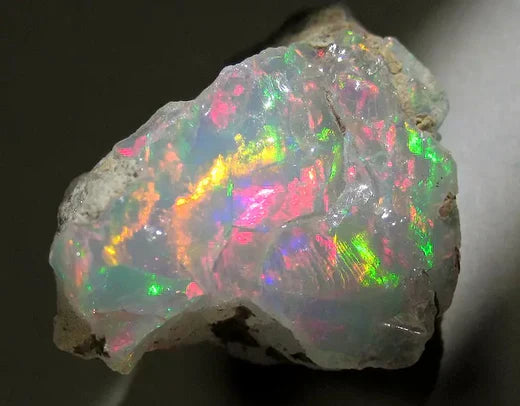
Australian Opal Vs Ethiopian Opal
luis gomezShare
When choosing which type of Opal Jewelry to invest in there are a multitude of factors to consider. Things like the origin of the stone, its colors, durability and of course its price all come into play. These considerations are not only important to end-point consumers but also to jewelers. The latter has to be certain that they are in fact investing in a gemstone that they will be able to sell, and more importantly, will result in a happy Client who will return for years to come. One of the first steps toward procuring the best Opal piece is determining what region of the world you want your stone to be sourced from. Most Opals, 95% of them, come from the land of down under, Australia. But what about that fledgling 5%? Well, aside from Australia, the biggest exporter is Ethiopia. In this article, we’re going to compare Australian Opals to Ethiopian Opals to help you understand some of their differences so that you can decide which type of Opal best suits you. Australian Opal vs Ethiopian Opal — let's dive into their distinctions.
Where does Opal come from?
First, it’s important to understand where Opals come from and how they are formed. While most Opal develops slowly, over millions of years, in fine pressurized layers of sedimentary rock, most Ethiopian Opal forms in volcanic rock, which likely contributes to some of its unique characteristics. Opals are found on every continent, but the best opals used for jewelry making are predominantly extracted from five countries: Australia, Ethiopia, Mexico, Brazil, and the United States. Important distinctions remain, however, as these five countries don't produce the same types nor the same amount of Opal stones. For example, Mexico is known in the market as the primary source of a legendary Opal variety called the Fire Opal. Meanwhile, Australia is the chief producer of Black Opals. Each zone has its own distinctive variety — its flagship stone.
Difference between Australian Opals and Ethiopian Opals
Origin and Age since their Discovery
Australian Opals
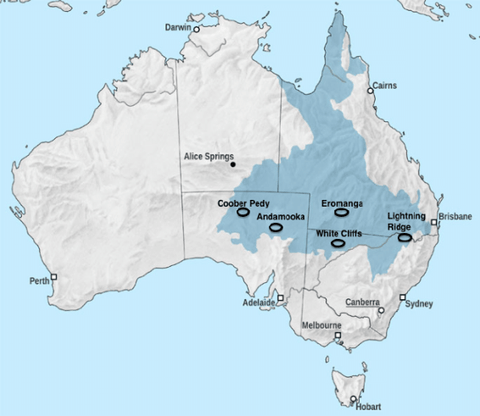
Australian Opal Fields
Australia is the world's leading producer of Opals. It’s where the vast majority of these precious stones come from. To what degree? Well, according to statistics supplied by the Australian government, the continent has historically produced 95% of the world’s precious Opal. Royalty, dignitaries, and celebrities alike, have all - at one time or another - sported a gemstone from this region.
There is a general consensus among historians that a German geologist, named Johannes Menge, was the first person to discover Opal in Australia. He unearthed common Opal in 1849, near Angaston, SA. Within a few decades, precious Opal too was unearthed, and the Australian Opal industry took flight.
Ethiopian Opal

Ethiopian Opal Fields
Evidence exists of Opal in North Africa dating back to 4000 BC — the relatively soft gemstone was believed to have been used as a carving tool at that time. Despite this ancient evidence of the stone's discovery, there was a considerable gap in time until Opal resurfaced in Africa in the late 1900's.
Today, Ethiopia may be the Opal market’s underdog, but it has made great strides in recent years. Its gem bonanza only recently began, as its commercial grade Opal was discovered much later than Australian Opals. How recently? 1994 — When a large deposit was discovered in the Menz Gishe District of the North Shewa Province. This first unearthing yielded Opals of diverse body tones like brown, orange and red, but it wasn’t until the 2008 deposit discovery at the Wollo Province that the Opals Ethiopia is now best known for - called “Welo Opals” - were uncovered. While Australia has been shipping out Opals for almost 2 centuries, Ethiopia has yet to hit the half century mark — that’s a vast opportunity difference.

Ethiopian Opal from Shewa Province - Image by James St. John
The 2008 discovery was a vital find to the fledgling nation. This prime source of Opal in volcanic rock from the Wollo Province (near the village of Wegel Tena) produced a higher grade Opal than those from North Shewa. Relative to the “Shewa Opals” the Welo Opals (also referred to as “Wello” or “Wollo”) were more stable. Ethiopia’s Opal industry remains small but is thriving — which is encouraging, as the country’s GDP - economic growth rate - depends on it.
Visual Characteristics
Opal Types
- Australian opal comes in a wide range of types and colors. Among them you’ll find Boulder Opals (below), Pipe Opals, Crystal Opals and Black Opals — some of these types even have some crossover. Black Opals are notoriously the most valuable, however, given their often steep price points, other types, such as Boulder Opals, have grown in popularity.
-
Ethiopian Welo Opal comes predominantly in crystal form with a range of base color from yellow to orange and (occasionally) black.

Ethiopian Black Opal from Wollo Province - Image by James St. John
Opal Colors
- It’s not easy to summarize the color of Australian Opals because they capture all colors. And each type of Australian Opal tends to reflect them in a slightly different way. For example, Black Opals and Boulder Opals will often exhibit very bright, bold colors, as the precious Opal in these stones is backed by either dark potch (common Opal) as in the case of Black Opals or ironstone (sometimes sandstone) with Boulder Opals. This contrasting backing intensifies the hue of the precious opal resting upon it. Crystal Opals or White Opals may have a softer flash, but can still reflect a rainbow of colors, as in this Crystal Opal Necklace.
Epiphany Australian Opal Necklace
- Ethiopian Opals will also cast back a spectrum of hues, however they commonly have very recognizable base tones ranging from earthy browns and oranges to yellows, and sometimes white. These gems often appear somewhat jelly-like, flashing holographic rainbows from their crystal-like bases. While there is the occasional unearthing of Ethiopian Black Opal, some Ethiopian Opals are treated with smoke, dyes or a sugar-acid in order to achieve a darker or more vibrant appearance. Outside of Andamooka Opals, it's unusual for Australian Opals to be treated.
Opal Patterns
- An extensive array of patterns can be found in Australian Opals. To name a few, there is the elusive chinese writing pattern, pinfire, mackerel, floral, broad flash, cats eye and of course the famous harlequin — easily the most sought after pattern of them all.
- Over the years, Ethiopian Opals, with their assortment of patterns, have assumed a similar naming system to that of Australians. Among them, the honeycomb pattern has become the most valuable and desirable — its pattern of course resembles honeycomb, but also looks something like snakeskin.
Durability
Perhaps the most significant difference between Australian Opals and Ethiopian Opals is that most Ethiopian Opals are hydrophane while Australian Opals are not. What does that mean? It means that Ethiopian Opals are hydrophilic (water-loving) and they will readily and readily absorb water. This is likely due to their volcanic origin, as they develops into more porous opal than non-hydrophane Opals, like Australians.
So why does this matter? When Ethiopian Opals absorb water, the stones will typically lose their color. This should be a temporary shift in state that should resolve after a period of drying out — sometimes up to two weeks — and then the stone’s color should return. And sometimes, this is the case. However, here at NIXIN Jewelry, we have also worked with Ethiopian Opals that have been exposed to water, lose their color, and after a drying period, their original color has not returned. In addition, we have also seen their crystal base permanently turn cloudy or transform an entirely different color — ie: from white to orange. This issue with water exposure can be a particular challenge for Clients who desire an Ethiopian Opal Ring, as they are likely to expose their hands, thus the ring, to water on a regular basis, when engaging in frequent and mundane actions like washing their hands.
Moreover, we have also seen Clients experience permanent color change with Ethiopian Opals in cases where they haven’t exposed their jewelry to water. It is most likely that something else permeates through the porous surface of the Opal, such as lotion, natural body oils, perfume or perhaps something else entirely, that alters these otherwise beautiful stones. This unpredictable quality makes wearing them a bit more complicated.
Australian Opals, on the other hand, are much less susceptible to this particular issue — that doesn’t mean that they are impervious to damage; it just means that they are much more resilient to these complications because they are non-hydrophane.
Given consideration alone, Australian Opals are more durable and wearable than their Ethiopian counterparts — in that you don't have to worry about water or the stone against your skin potentially altering the gem's play of color. Though we don’t recommend wearing them for rigorous activities, like playing sports or while gardening, with proper care they can last a lifetime. Ethiopian Opals are a beautiful option as well, but will require even more caution to prevent damage.
Price range
Like most gems, Opals can be found at a sweeping breadth of price points. If searching for a center stone for an Australian Opal Engagement Ring, you could easily find a simple White Opal for $150 or an investment grade Black Opal valued in the hundreds of thousands.
On average, however, Ethiopian Opals cost significantly less than Australian Opals. It’s not hard to find a beautiful Ethiopian gem, much larger than an Australian Opal stone, for a fraction of its cost. There are likely a number of factors contributing to this price differential including the relative new entrance of Ethiopian Opals to an already competitive marketplace, and perhaps the challenges related to their hydrophane nature.
Which is Better - Australian Opal or Ethiopian Opal?
Ultimately, we don’t suggest one is better than the other, however we have had much more consistent experiences working with Australian Opal than with Ethiopian Opal. Here at NIXIN Jewelry, our designs are inspired by our stones, so predictable performance from our gemstones is critical. If we create a one of a kind piece around a unique gem, and the stone later permanently discolors, it’s a tremendous disappointment. We do love the beautiful nature of Ethiopian Opals (yes - we have a few amazing ones in the NIXIN Vault), but without more clarity around how to select ones that will retain their original appearances, we will continue to use them sparingly and lean into the beauty Australia has to offer.
We invite you to explore — Come find your One of A Kind.



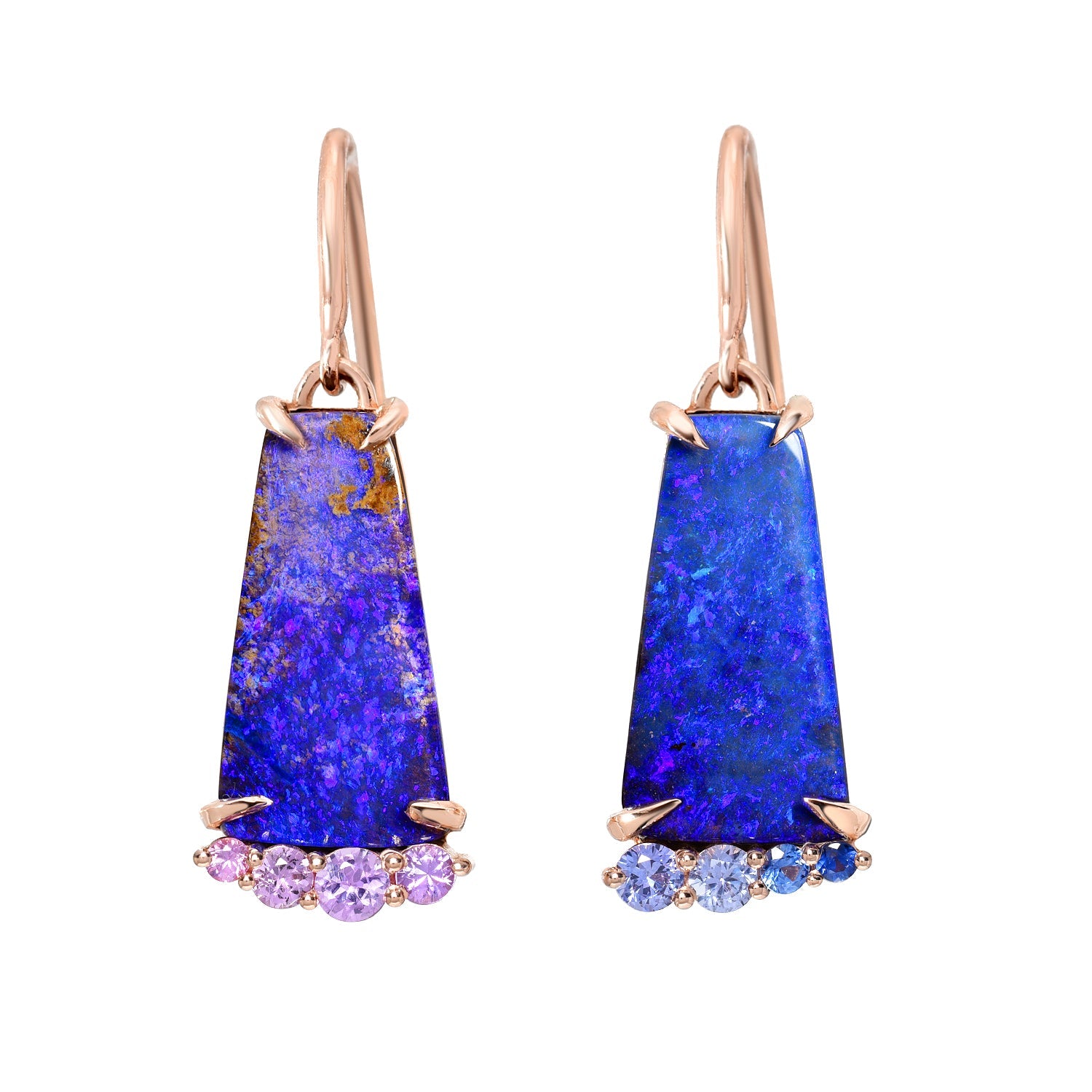
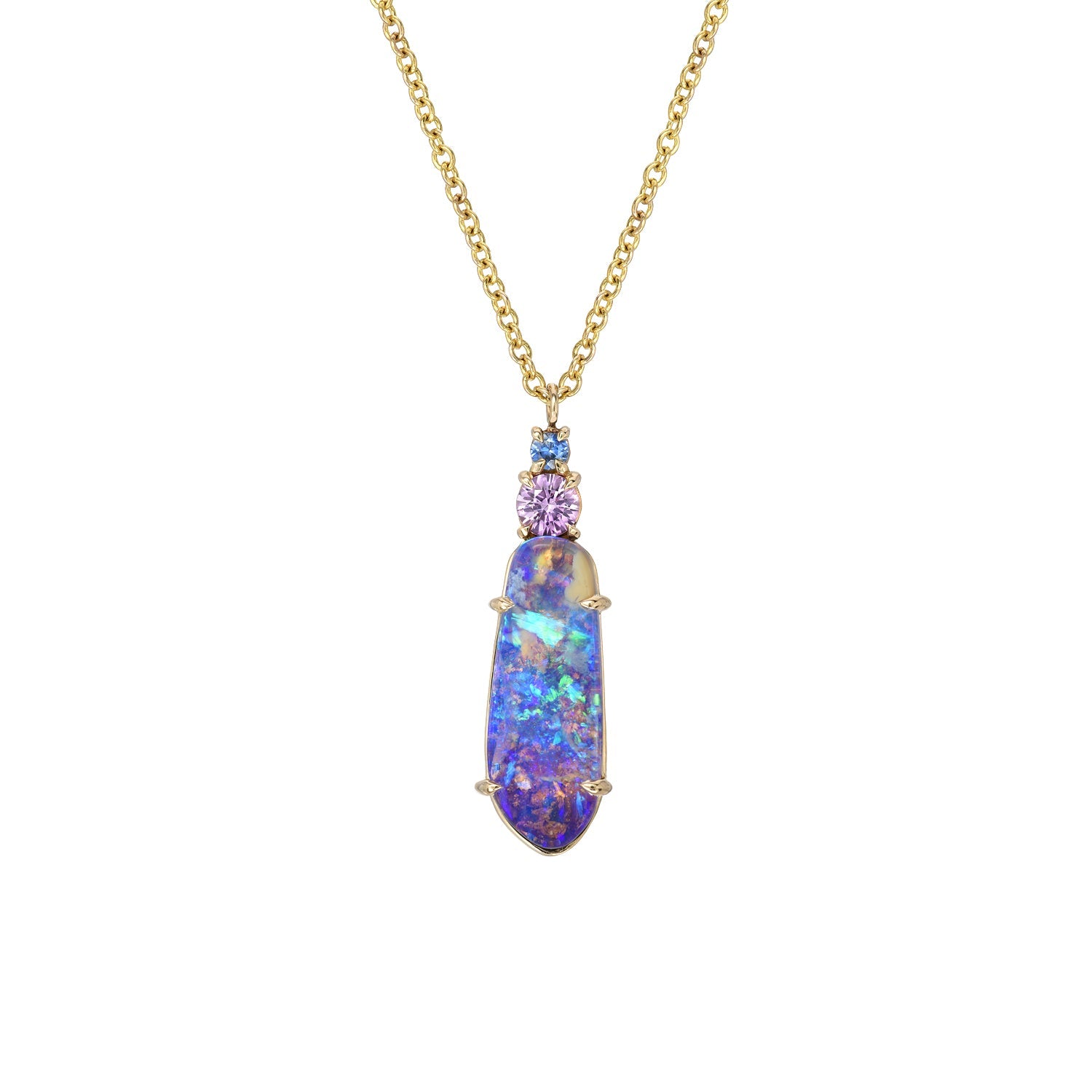
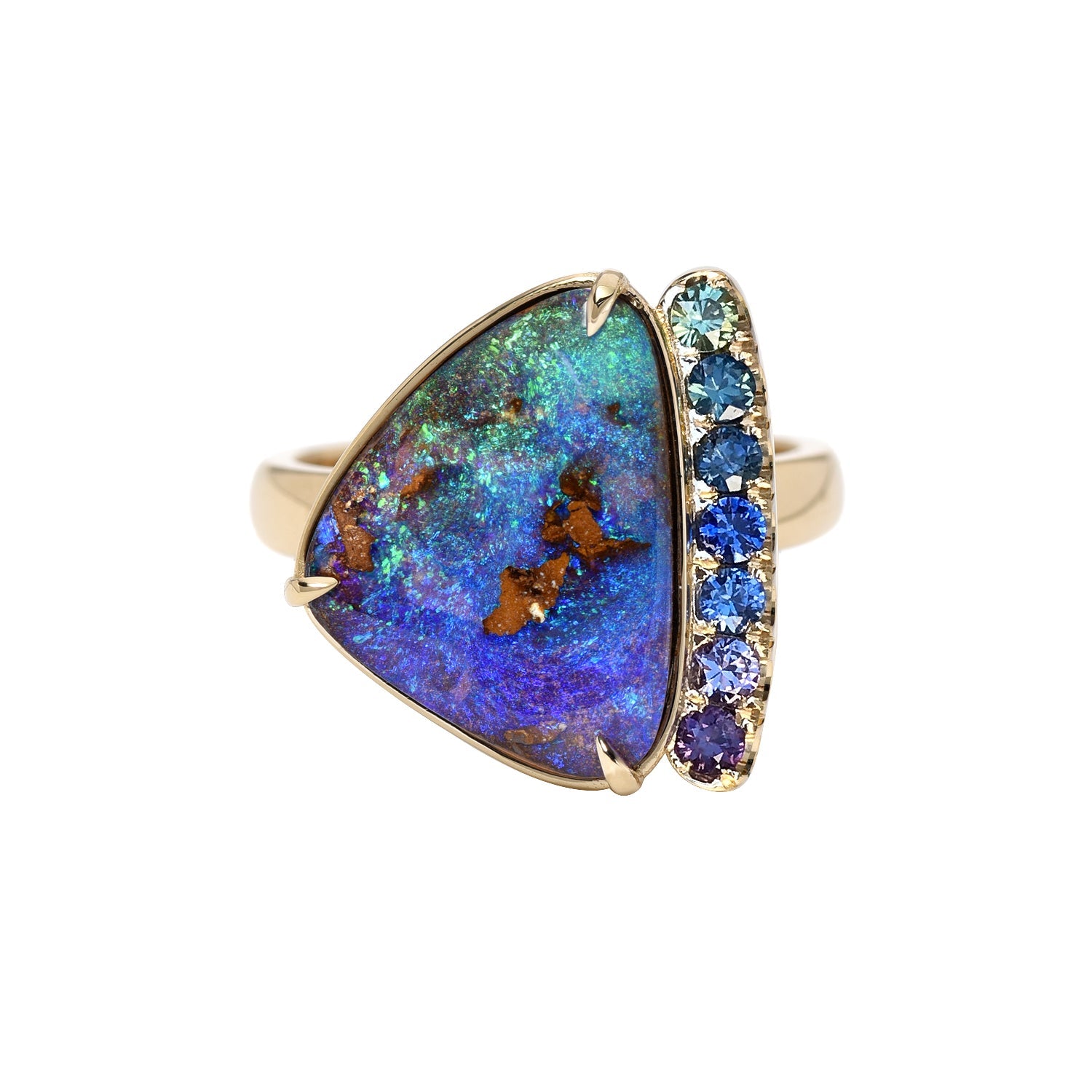
6 comments
Hi Edeglign -
I respect that; everyone has their own preferences with gemstones; opal types included. Are you able to specify which statement you’re referring to? If there is a fact that’s incorrect I would want to revisit for fact checking. Thank you!
Warmly,
Nicki
Hi Amanda -
I personally am unfamiliar with “oil opal.” If legitimate, it seems this information probably should have been disclosed by the vendor prior to sale if it’s not widespread knowledge. You could probably contact GIA to verify the existence/authenticity of Ethiopian Oil Opal.
Hope that helps!
Nicki
I purchased some Ethiopian “oil” opal (online ).I did not know there was such a thing. When I received the order I patted it dry to display it. Within 48 hours it cracked & fell into several pieces. I contacted the vendor & was told that “oil” Opal has to be left in Baby or Mineral oil at all times to maintain its fire and integrity or it cracks??? This was new to me. Has anyone heard of this and if so, is there a way to dry oil Opal so it can be displayed with the cracking?
Hi Madelene –
I just love the sound of your ring. I have a soft spot for antique pieces – especially those with Opals in them.
So the waxy finish can be a hint as to its type, but on its own, I wouldn’t use that as the sole determining factor.
By “the lighting” I’m not sure exactly what you tried, but if you haven’t yet, you could try testing with an ultraviolet light. Most often, Australian Opals (if not Boulder Opals) will first fluoresce blue or white-blue, and then as the light is turned off they will phosphoresce green for a moment before extinguishing all color.
Ethiopian Opals on the other hand, trend toward fluorescing blue or white-blue (or not at all), and then bypass phosphorescing green. So using the UV Light test would be yet one more checkpoint to cross-check against.
Another test you could try is the “lick test.” Dip your finger in water and then touch it to the surface of the opal. It’s said that if the stone is Ethiopian, it will stick; if it’s Australian, it will not.
Each additional data point you can gather will help to paint a more complete picture of what you have.
If you would like to send some pictures for me to take a look at, feel free to send them to:
hello@nixinjewelry.com or via Instagram DM: @NIXINjewelry
And for the record, Ethiopian Opals aren’t bad – they just need to be handled differently than Australian Opals, and therefore it’s imperative their origin/type be disclosed at sale. They should also be priced accordingly.
Hope that information is helpful!
Warmly,
Nicki
I wanted an opal and was in Massachusetts in an antique store. I had done a little research and fell in love with a ring the opal is vibrant and has a waxy finish to it. I did some of the tests like turning it on the side and making sure didn’t have a striped pattern. Also the lighting.etc now I’m hoping I wasn’t ripped off due. Ethiopian opals have a waxy finish. Is that correct? I will upload a picture but I don’t see a place where I can.